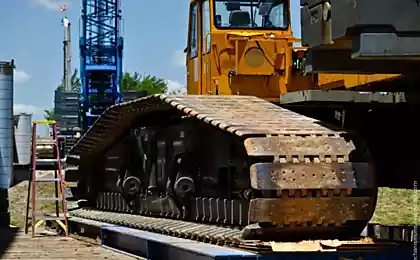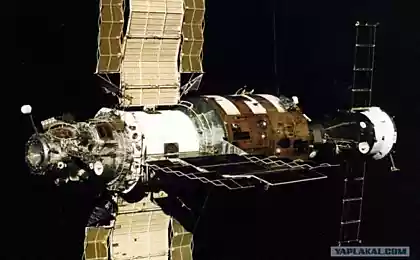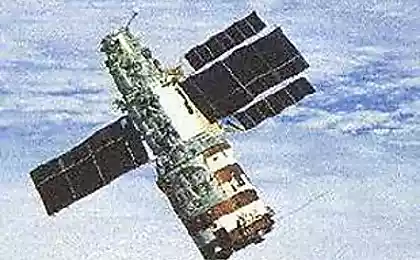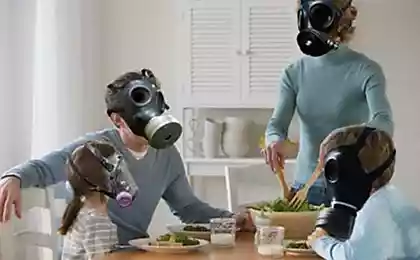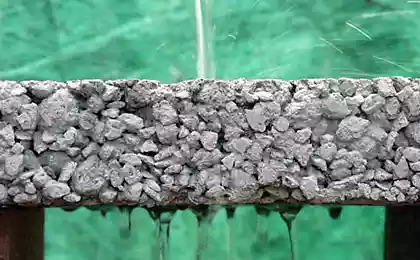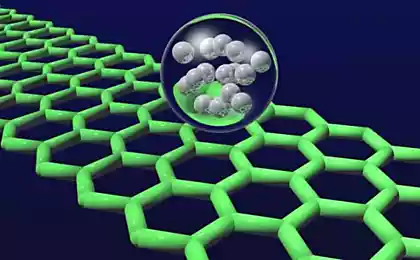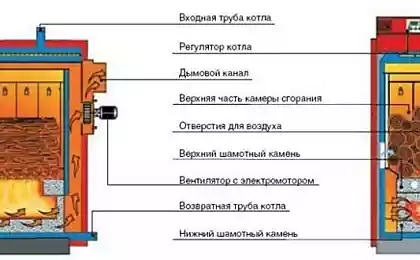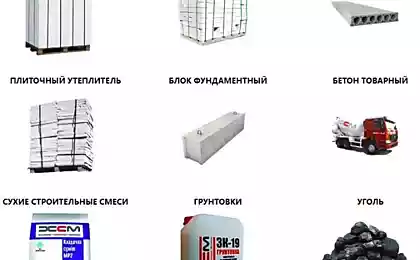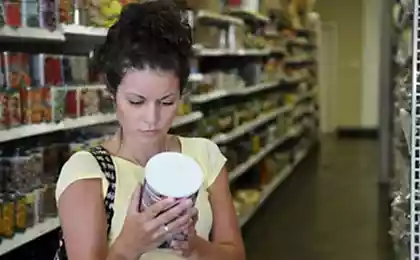681
How can I replace the concrete — "green" alternative
Concrete is the most common material which is widely used in construction, but also one of the most environmentally unfriendly materials. Are there any "green" alternative to concrete?

Concrete is all around us: bridges, houses and offices, overpasses, and sidewalks are all made of concrete.In the process of production of concrete is released into the atmosphere huge amounts of carbon dioxide. Environmentalists believe that this creates a greenhouse effect and leads to climate change and global warming. For this reason, the search for environmentally friendly and safe building materials that would be an alternative to concrete.
Some of these materials have long been known, but new is also a good alternative.

1. Rammed earth.
The land on which we walk is the most natural and the first building material. For many millennia, humans have used rammed in wooden forms land for the construction of houses.

Nowadays the technology of building houses from the ground applies a talented architect Michael Reynolds that builds a completely Autonomous and non-volatile at home from waste materials in the style of "Earthship Biotecture".
SUBSCRIBE to OUR youtube channel that allows you to watch online, download from YouTube free video about the recovery, the rejuvenation of man. Love for others and ourselves, as the feeling of high vibrations — an important factor for improvement .
Put LIKES and share with your FRIENDS!
www.youtube.com/channel/UCXd71u0w04qcwk32c8kY2BA/videos
2. Wood.

Wood has many advantages over such industrial construction materials like steel or concrete. During the construction of the tree requires much less energy-intensive processing methods.
3. Derevobeton (arbolita).

Derevobeton made from a mixture of concrete and sawdust. The finished material is lighter than conventional concrete and retains heat well. It is possible to save on heating.
4. Geopolimer.

Watershed Materials, a startup from California has developed a technology to produce high strength masonry building with a low carbon footprint. As the framework uses natural mineral geopolymers. New construction ecomaterial was 2 times stronger than concrete, resistant to water and chemical erosion.
This technology converts natural clay, which can be easily found all over the planet, in a reliable stone products. But unlike clay, which requires a lot of energy (firing at high temperature), manufacturing technology geopolimer changes the chemical structure of the clay. Masonry of geopolimer durable, high strength, resistant to atmospheric agents.
The geopolymers can be a great alternative to concrete and Portland cement used in concrete and masonry.
SUBSCRIBE to OUR youtube channel that allows you to watch online, download from YouTube free video about the recovery, the rejuvenation of man. Love for others and ourselves, as the feeling of high vibrations — an important factor for improvement .
Put LIKES and share with your FRIENDS!
www.youtube.com/channel/UCXd71u0w04qcwk32c8kY2BA/videos
5. Straw.

Like wood, straw has long been used in construction. It creates a good insulation, which is important in hot and cold weather. To build houses of straw needed a sturdy frame. Another benefit of straw — it is a renewable resource.
6. The iron stone — Ferrock.

Iron stone is a new construction material which is produced from waste in the steel industry, for example, steel dust. Ferrock stronger than concrete. In the process of drying and hardening in the manufacture of iron stone carbon dioxide not released, as in the case of concrete, and is absorbed.
7. Herbal concrete Grasscrete.

Herbal concrete is a grid of concrete, through which the grass grows — a good variant cover for garden paths. The advantage of this material — the lesser the amount of concrete in the finished product. Herbal concrete combines the properties of solid grounds and lawns. Another advantage is that rain water easily passes through the holes, and the area remains dry.
8. Solomon.

Solomon made from ash that remains from burning coal. Solomon 97% recycled content.
9. Recycled plastic.

Recycling of plastics and the use of the materials on its basis in the construction may be one of the solutions to the problem of pollution these wastes.
Instead of mining and processing of the usual fillers for concrete, you can use shredded plastic. Get material like solomono, with improved thermal insulation properties, easy and cheap.
10. Bamboo.

For millennia, especially in Eastern countries, bamboo has been a primary building material. Lightweight, strong, fast renewal — all this makes bamboo a promising construction material for modern buildings. Bamboo is used as a decorative finishing and framing material for walls of buildings.
11. Mycelium.
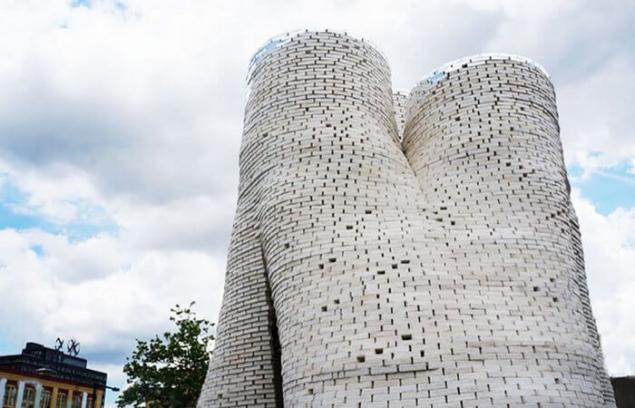
Mycelium — a building material that is grown on the basis of a composite of natural materials such as chopped straw. The spawn consists of mycelium and fruiting bodies of fungi. With the help of special templates in the process of growth sets the shape of the material. Next, the resulting product is subjected to drying. In the end get very light and durable bricks or other products. published
Source: www.epochtimes.com.ua/ru/poleznye-sovety/chem-mozhno-zamenit-beton-zelyonaya-alternativa-122877

Concrete is all around us: bridges, houses and offices, overpasses, and sidewalks are all made of concrete.In the process of production of concrete is released into the atmosphere huge amounts of carbon dioxide. Environmentalists believe that this creates a greenhouse effect and leads to climate change and global warming. For this reason, the search for environmentally friendly and safe building materials that would be an alternative to concrete.
Some of these materials have long been known, but new is also a good alternative.

1. Rammed earth.
The land on which we walk is the most natural and the first building material. For many millennia, humans have used rammed in wooden forms land for the construction of houses.

Nowadays the technology of building houses from the ground applies a talented architect Michael Reynolds that builds a completely Autonomous and non-volatile at home from waste materials in the style of "Earthship Biotecture".
SUBSCRIBE to OUR youtube channel that allows you to watch online, download from YouTube free video about the recovery, the rejuvenation of man. Love for others and ourselves, as the feeling of high vibrations — an important factor for improvement .
Put LIKES and share with your FRIENDS!
www.youtube.com/channel/UCXd71u0w04qcwk32c8kY2BA/videos
2. Wood.

Wood has many advantages over such industrial construction materials like steel or concrete. During the construction of the tree requires much less energy-intensive processing methods.
3. Derevobeton (arbolita).

Derevobeton made from a mixture of concrete and sawdust. The finished material is lighter than conventional concrete and retains heat well. It is possible to save on heating.
4. Geopolimer.

Watershed Materials, a startup from California has developed a technology to produce high strength masonry building with a low carbon footprint. As the framework uses natural mineral geopolymers. New construction ecomaterial was 2 times stronger than concrete, resistant to water and chemical erosion.
This technology converts natural clay, which can be easily found all over the planet, in a reliable stone products. But unlike clay, which requires a lot of energy (firing at high temperature), manufacturing technology geopolimer changes the chemical structure of the clay. Masonry of geopolimer durable, high strength, resistant to atmospheric agents.
The geopolymers can be a great alternative to concrete and Portland cement used in concrete and masonry.
SUBSCRIBE to OUR youtube channel that allows you to watch online, download from YouTube free video about the recovery, the rejuvenation of man. Love for others and ourselves, as the feeling of high vibrations — an important factor for improvement .
Put LIKES and share with your FRIENDS!
www.youtube.com/channel/UCXd71u0w04qcwk32c8kY2BA/videos
5. Straw.

Like wood, straw has long been used in construction. It creates a good insulation, which is important in hot and cold weather. To build houses of straw needed a sturdy frame. Another benefit of straw — it is a renewable resource.
6. The iron stone — Ferrock.

Iron stone is a new construction material which is produced from waste in the steel industry, for example, steel dust. Ferrock stronger than concrete. In the process of drying and hardening in the manufacture of iron stone carbon dioxide not released, as in the case of concrete, and is absorbed.
7. Herbal concrete Grasscrete.

Herbal concrete is a grid of concrete, through which the grass grows — a good variant cover for garden paths. The advantage of this material — the lesser the amount of concrete in the finished product. Herbal concrete combines the properties of solid grounds and lawns. Another advantage is that rain water easily passes through the holes, and the area remains dry.
8. Solomon.

Solomon made from ash that remains from burning coal. Solomon 97% recycled content.
9. Recycled plastic.

Recycling of plastics and the use of the materials on its basis in the construction may be one of the solutions to the problem of pollution these wastes.
Instead of mining and processing of the usual fillers for concrete, you can use shredded plastic. Get material like solomono, with improved thermal insulation properties, easy and cheap.
10. Bamboo.

For millennia, especially in Eastern countries, bamboo has been a primary building material. Lightweight, strong, fast renewal — all this makes bamboo a promising construction material for modern buildings. Bamboo is used as a decorative finishing and framing material for walls of buildings.
11. Mycelium.

Mycelium — a building material that is grown on the basis of a composite of natural materials such as chopped straw. The spawn consists of mycelium and fruiting bodies of fungi. With the help of special templates in the process of growth sets the shape of the material. Next, the resulting product is subjected to drying. In the end get very light and durable bricks or other products. published
Source: www.epochtimes.com.ua/ru/poleznye-sovety/chem-mozhno-zamenit-beton-zelyonaya-alternativa-122877
